or
How To Identify and Cook Chanterelle Mushrooms And Be Confident You Won’t Poison Yourself
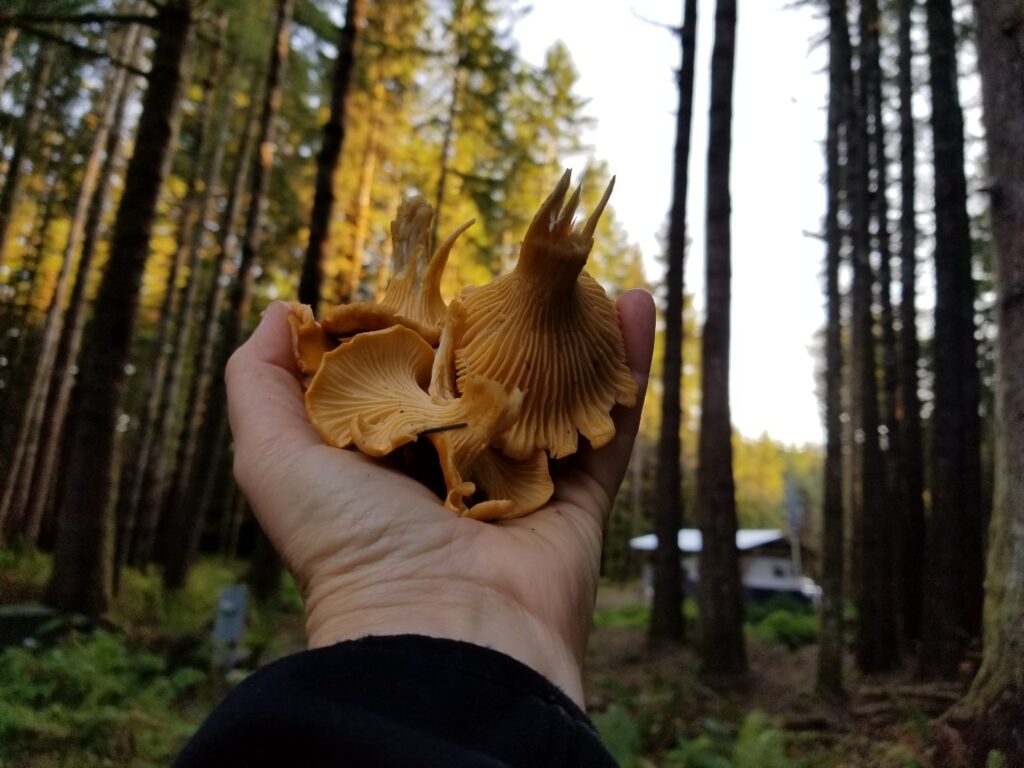
Ah, life in the Pacific Northwest. I love it out here. The summer weather is so mild with only a few days that get into the outliers of high temperatures. Unlike my former home on the Gulf Coast, there are definite seasons and finally I can not only enjoy but come to love summer. Gentle breezes let you wear a light T-shirt and shorts and open-toed shoes. You can decide to go for a walk and just heading out the door without having to pile on layers of coats and socks and shoes with laces. A PNW Summer gets me and forgives my tendency to wear inappropriate shoes and forget my hat.
I headed to our little peninsula paradise in mid-September. As I made my way around the tree-lined lake and saw the leaves starting to turn yellow and red, my heart sank a little. I am not yet ready for fall and I dread the onslaught of winter. My blood isn’t thick enough yet or whatever it is that lets some people survive icy mornings without batting an eye. As I pulled into our forested driveway my heart was heavy knowing the sun would soon not be seen over the tree line and the birds would not be singing and I would be once again ensconced in many, many layers of binding clothes.
But wait, what golden light on yonder forest floors breaks?
Oh. My.
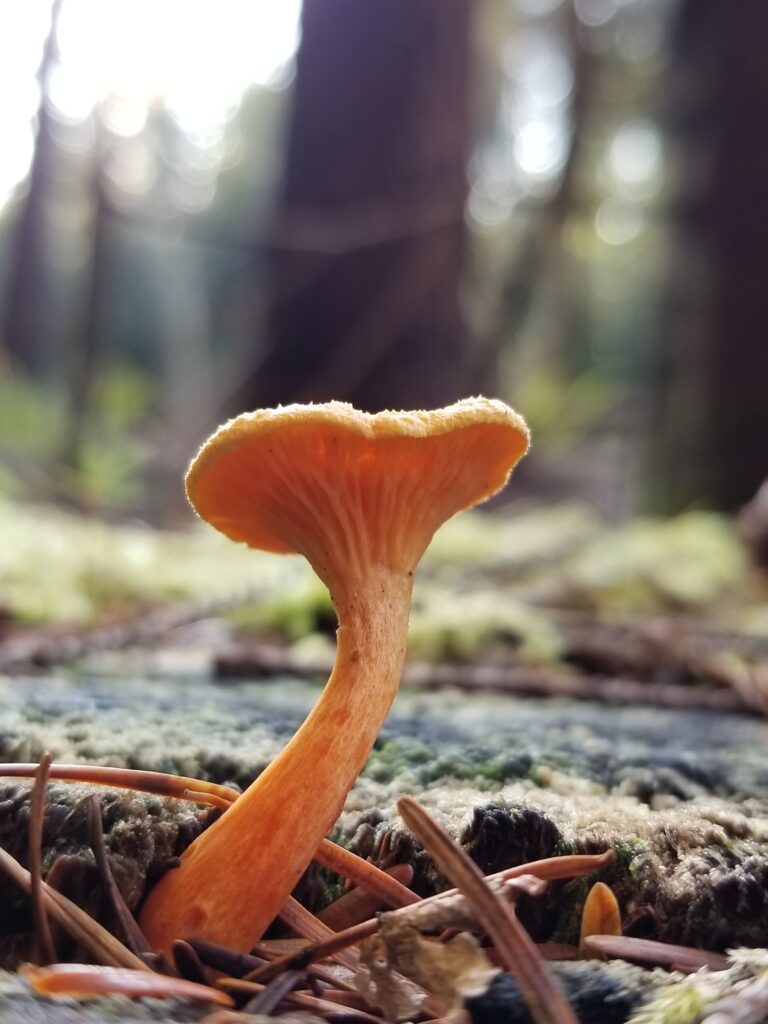
It is the beautiful harbinger of fall around here. The chanterelle. And they are just beginning to poke their lovely heads up.
Now where I come from there are not many mushrooms. Of course, in a metropolis you are not going to find much in the way of foraging at all. All that lawn mowing and green grass chemicals are not good for wild food. When the don introduced me to morel hunting in early spring, I was amazed! All this earthy umami deliciousness was available right outside the door of our little house in the woods? All one had to do was take a lovely stroll in the woods and look around. Morels are a bit harder to see for the inexperienced eye but getting that experience is fun and if you do not find any morels, you have still had a lovely walk.
But chanterelles, now they are a different story altogether. Chantys do not try to hide or blend in to the forest floor as do morels. They pop out from the forest floor like glow sticks at a rave, making it so easy to spot them you just know they want you to take them home. I suspect if they could they would prance around your feet like a puppy and nip at your pant legs. And they make it so easy to identify them that even a beginner like me can differentiate them from the fakes.
In case you are ever taking a walk in the woods and see some orange-ish mushrooms, here is how to tell if it is a chanterelle or if it will make your butt bleed. (To be fair, it will be the chafing from toilet paper abrasion due to frequent toilet visits that will cause bleeding, not the fake chanterelles, but that doesn’t sound as dramatic)
First off, chantys are a medium to dark golden color. But so are the two look-alikes that you should not eat so do not go on just color. Chanterelle mushrooms have what is known as false gills. Gills are those things on the underside of the cap easily seen on mushrooms you get from the store, they look like the fins on your air conditioner compressor. But chantys do not have regular gills, they have this wavy stuff that goes partway down the stem. This is the best way to tell a chanty from the non-chanty.
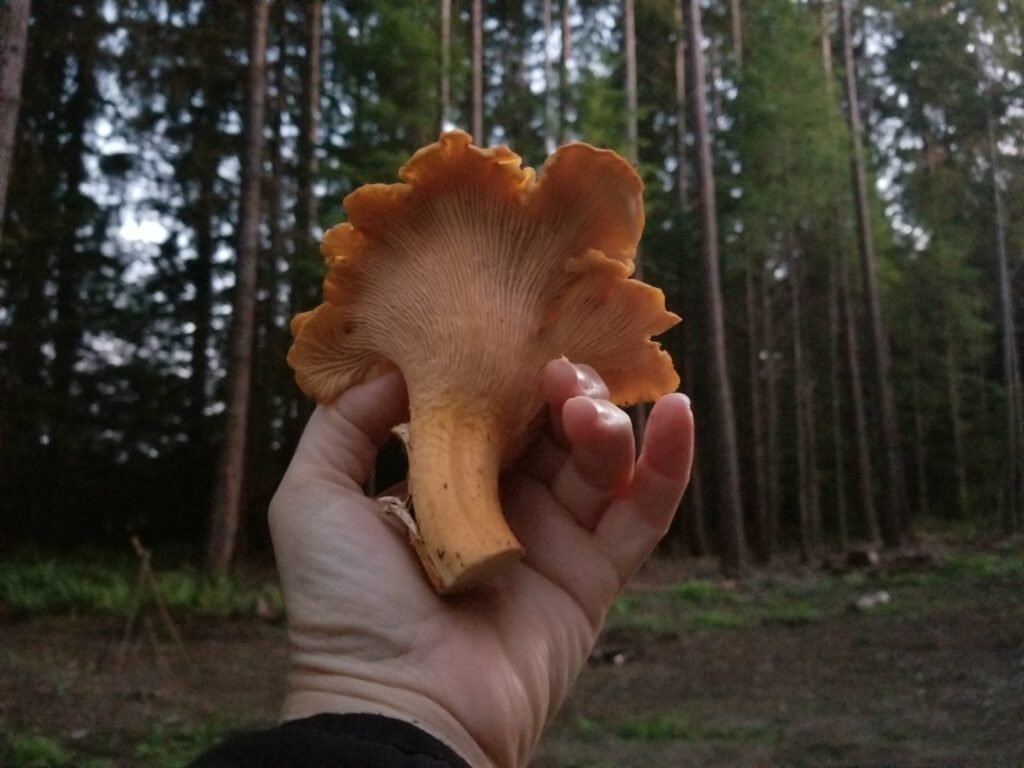
Additionally, chantys grow singly, not a big mess of ‘shrooms like some fungus beehive. They also grow on the forest floor, not on trees or rotting logs, because they have a relationship with the trees. This relationship is called mycorhizal and it means the fungus and the tree roots hook up.
Now, I know what you are thinking. How to tell the real chanterelles from those butt bleeders? Good question! Those butt bleeders are commonly called Jack-O-Lanterns or Omphalotus olivascens, I call them omphas for short. First off, they won’t kill you, just give you terrible diarrhea for a couple of days. That is much better than some amanitas making you get a liver transplant, if you live at all. So how to tell the ompha from the chanty? Simple! Ompha has gills. Check it out.
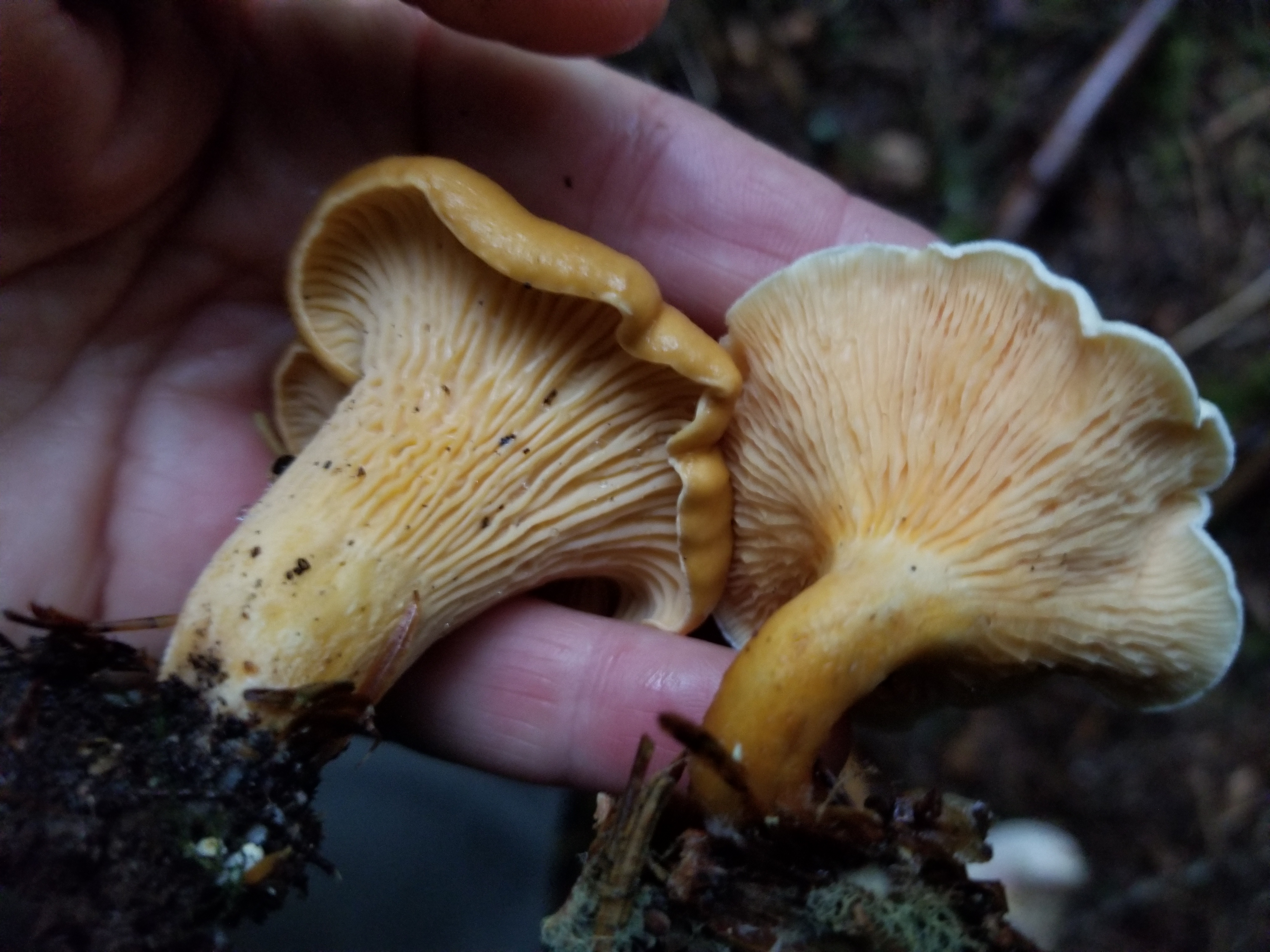
Here is a chanty and an ompha together. These two were found only a couple of feet apart under a giant spruce. Around here the chantys prefer Douglas Fir but there is always the exception. Except the gills part, chantys never have true gills.
Also, ompha is a scrub, in the parlance of our times, meaning it just sits there sucking the life out of trees, dead or alive, and does not have a plan to become a contributing member of society. They just hang out on the passenger side of life. So the ompha will be found growing on dead trees or fallen logs. Omphas may also grow in clumps, where more than one mushroom is growing from the same base. Chantys do not do that. They stand on their own two feet, so to speak.
What do you do if you do not have access to chanterelles in your neck of the woods? You can purchase dried mushrooms here. You must be sure to use boiling water to rehydrate or risk a rubbery mess. Since most of the chanterelles charm is the color and texture it adds to a dish and not the flavor, make sure to follow directions in rehydrating. If you have access to fresh mushrooms and want to hoard them for later, they do freeze well if you saute them before freezing. I wonder if you could find fresh chanterelles in a fancy food store like Whole Foods? Let me know if you see them in your grocery store!
So, what to do with these mushrooms if you are not going to hoard them for the zombie apocalypse? So many things! You can try the classic saute in butter and garlic and serve with crackers and cheese. Then you will realize I am right and that chantys do not have such suberb flavor. (Exception alert, I am told that black chanterelles are flavorful but I cannot verify at this time) I think the thing to do is to add them to creamy dishes, a baked mac-n-cheese, a risotto, a stir-fry, in a cream sauce over tofu (or a meat, I guess, if you are into that), added to an omelette or French-style creamed eggs, chopped and sauteed then stirred into a goat cheese for a kick-ass toast spread or dip. I went and made up a special chanty dish and I am sharing the recipe with you just below.
Shoot, now I am hungry, even though I am not hungry. Writing about food always does that to me.
So, take a walk in the woods this fall and see what you find. Or take a vacation to some northern woods if you are on the Gulf Coast, you deserve a break from the heat and the threat of tropical storms and hurricanes. Go find some little gold buttons of love on the forest floor to remind you that while the sun is going away for now, it will be back in due time.
Here is that simple recipe for the foraged harvest, Chanterelle and Tomato Sauce. The sauce is fast to cook so start the pasta water first, then get going on this quick and easy sauce. It is great on pasta and also on toast! Our tomato harvest has been extraordinary this year so finding ways to showcase both foraged and farmed foods has been a wonderful task! I prefer cooking tomato dishes in cast iron to get a little boost of iron in my diet. Don’t believe the myth about acidic foods and cast iron, a seasoned cast iron skillet can handle anything, even an omelette. If you only have one skillet in your kitchen, make it this one. You will love it. And if you do not have a wooden spatula as shown below, check this one out. I use it for everything and it is good on any type of pan finish.
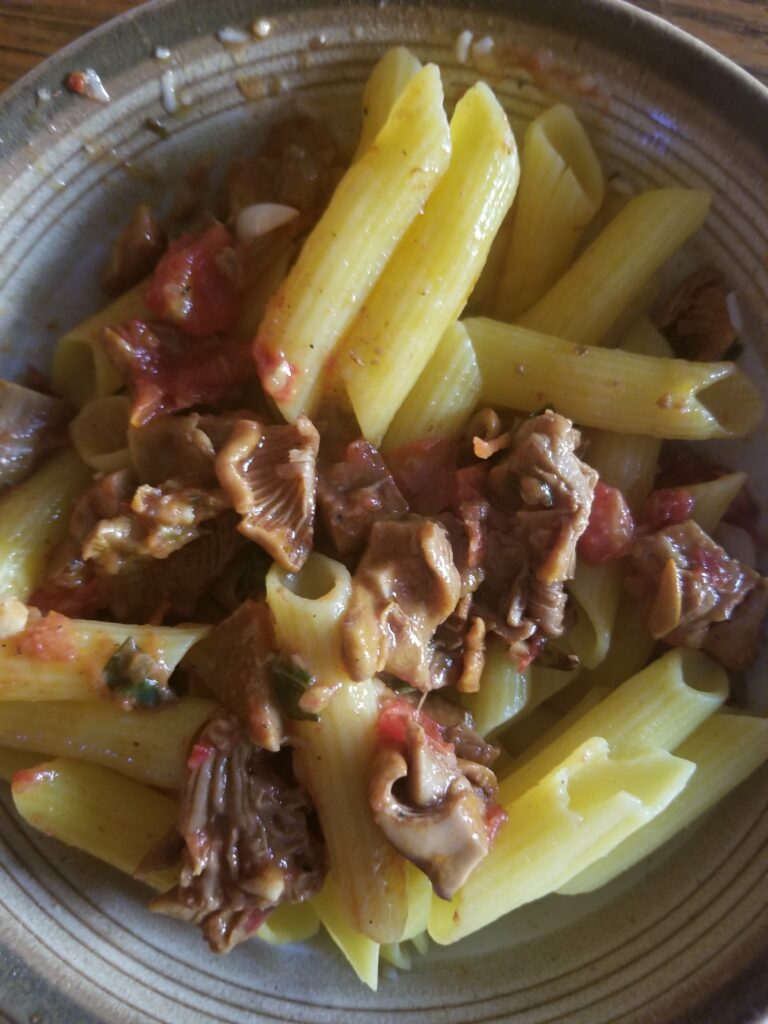
Chanterelle with Tomato Sauce
- 1 Cup sliced chanterelle mushrooms
- 2-4 Tablespoons butter
- 1 Beefsteak tomato chopped with juice (about 1 cup chopped tomato)
- 3 cloves garlic (if you are not a garlic lover, you can use less but I recommend trying it this way at least once)
- juice from half a lemon
- flaked finishing salt
- grated Parmesan or Romano (optional)
In a 12 inch cast iron skillet, saute the chanterelles in 3 Tablespoons of butter. If they seem to stick before cooking down add more butter as needed. About 4 or 5 minutes into the saute, press on a couple of mushrooms with a wooden spatula, if it squishes down a bit and releases some watery juice it is cooked. You don’t have to worry about over-cooking mushrooms but do not burn your butter! Once the mushrooms are nice and soft, add the chopped tomato, juice and all. Let the tomato and mushroom cook down, about 3-4 minutes. Now add the garlic and cook until garlic is fragrant, only a minute or two, and there is still tomato juice and butter sauce standing in the pan. Stir the lemon juice into the mixture and remove from heat and add a sprinkle of flaked salt. Serve over pasta and top with some grated Parm or Romano, although this is optional and I like the sauce with and without the cheese. Leftover sauce is fabulous on toast or in a sandwich with a slice of gruyere.
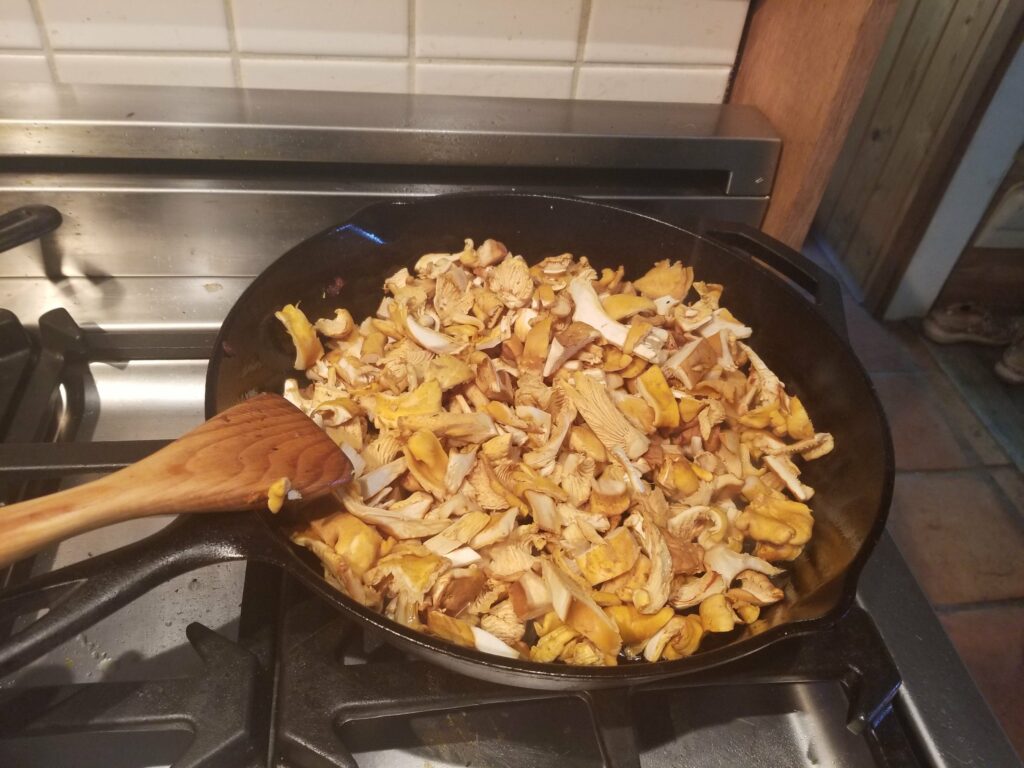
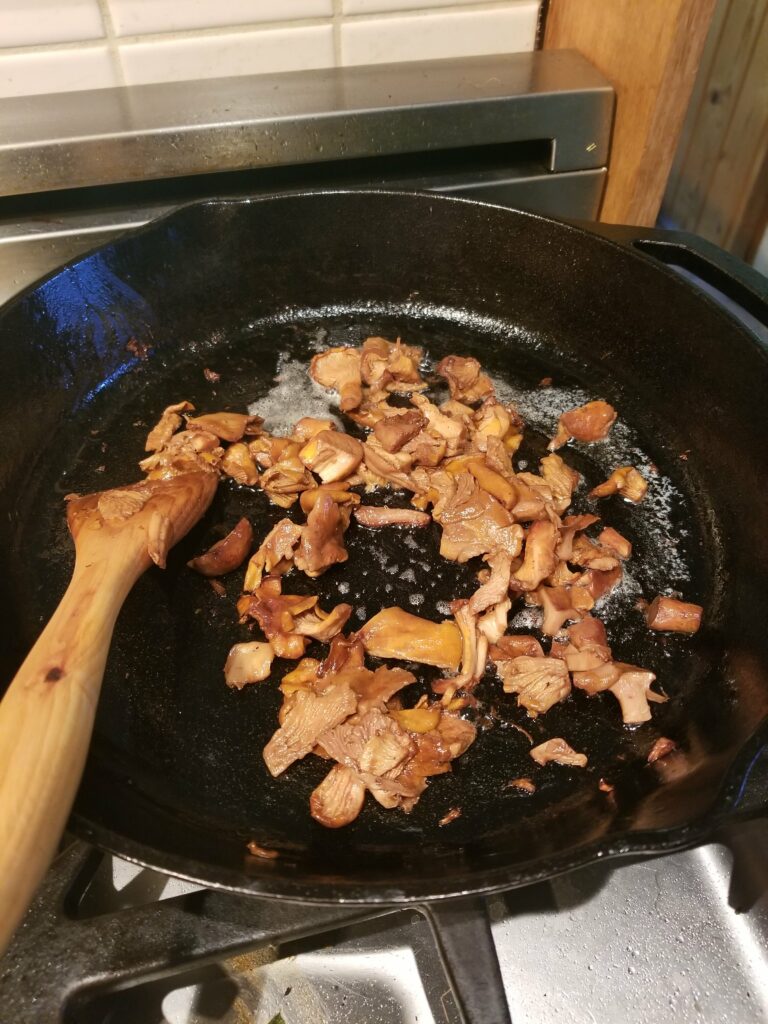
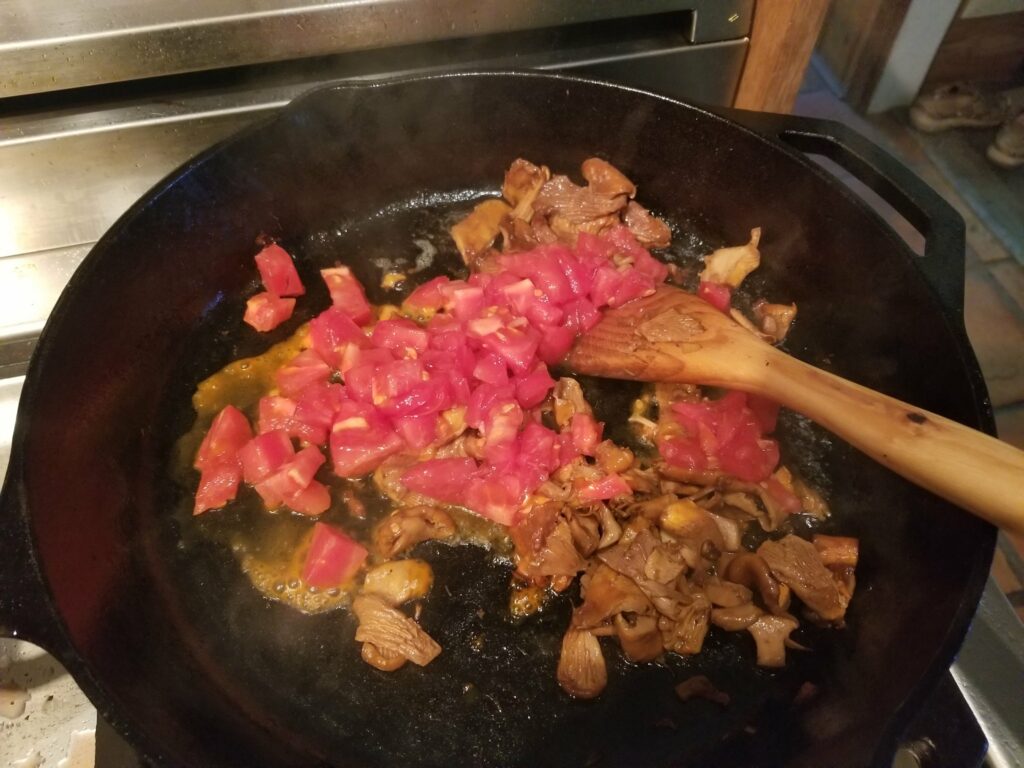
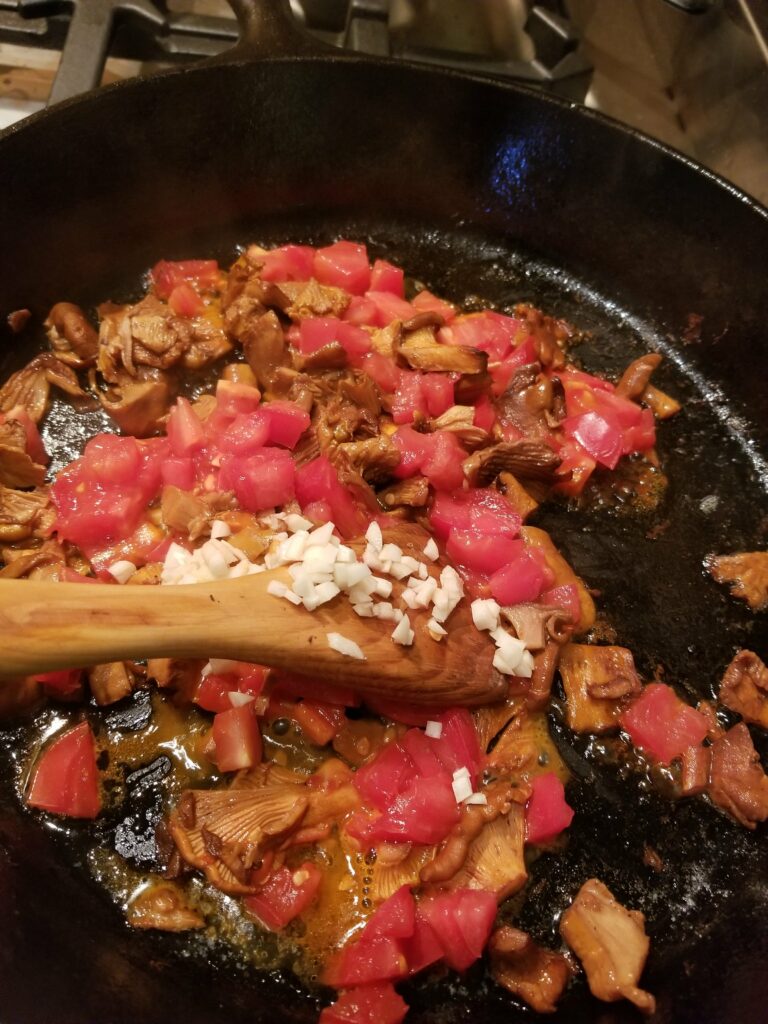
Let me know if you try this recipe and how it worked out for you! If you do not have a cast iron skillet then use whatever 10-12 inch skillet you have and then get on Amazon and order a cast iron skillet! You will be amazed at how easy cooking can be.
Here are the items I recommended in the recipe above, consolidated just for you. If you do buy one of these items on Amazon through my provided link, it will not cost you anything extra and Amazon will pay me a small commission on the sale so I can bring you more recipes that are simple and delicious.





What’s that you say?